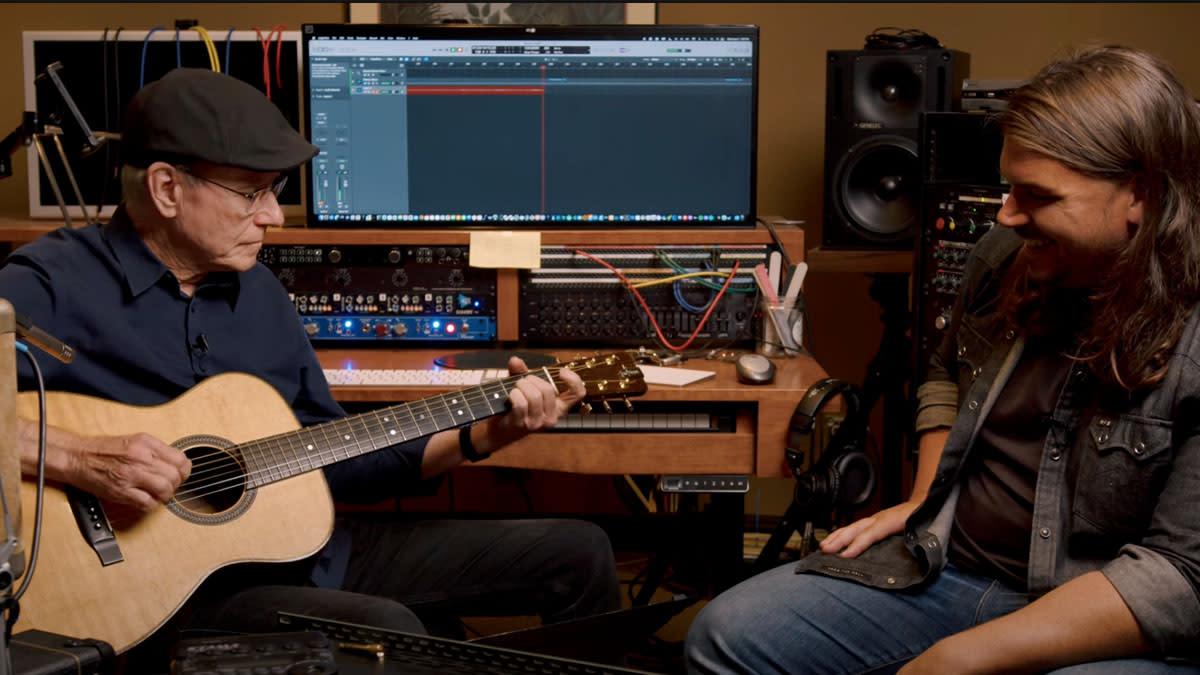“He likes first takes is what I learned from Stevie Wonder”: Watch session legend Dean Parks talk Innervisions, Steely Dan and Larry Carlton’s “magic” ES-335

- Oops!Something went wrong.Please try again later.
- Oops!Something went wrong.Please try again later.
- Oops!Something went wrong.Please try again later.
- Oops!Something went wrong.Please try again later.
Dean Parks recently sat down with Vertex Effects – whose boost pedal he is big fan of – to share his memories of some of the most legendary sessions on his CV. And there are many.
Parks is a player who needs no introduction. He has had a formidable career as a first-call session pro, working with the likes of Sonny and Cher, Michael Jackson, Joe Cocker, Eric Clapton, and perhaps most famously Steel Dan and Stevie Wonder – two artists he discusses here. And Vertex’s Mason Marangella is on-hand to get the key gear details behind the tracks, and all these years later work out who did what and why.
As it turns out, the who was doing what and why was always something that was in the air when working with Steely Dan’s dynamic songwriting duo, Walter Becker and Donald Fagen. “Working with them was an enigma always because they weren’t sure what they wanted either,” says Parks. Josie, from 1978’s Aja, was a case in point. There were some certainties when going into a recording session with Becker and Fagen; Parks knew at least that there was a strong chance the record would sell.
“We always knew, from the first time we recorded with them, which was Pretzel Logic, that was well into their successful career – they had already done Do It Again, Reelin’ In The Years, and they were a hit band and we knew it was going to get airplay,” says Parks. “It was going to be heard. We had faith. Everybody was on their best foot forward.”
They were a hit band and we knew it was going to get airplay. It was going to be heard. We had faith. Everybody was on their best foot forward
And Parks was on a Roland Jazz Chorus, back then a recent addition to studios across the world having debuted in 1975, working a stereo spread, laying down a harmonised part with himself.
“The first thing that happened in the music business where there was a chorus unit was the JC120, the Roland Jazz Chorus,” says Parks. “They had one there, and they wanted me to play the part through that. And they mic’d both speakers so they would have stereo chorusing.”
As, from Stevie Wonder’s 1976 studio album Songs In A Key Of Life, was another legendary session. Parks got the call late from Ben Barrett, the contractor from Motown [Songs… would be released under Motown sub-label Tamla].
Could he make it to Crystal Sound on Vine Street, Hollywood? The call sheet read 11pm or midnight. And when Parks got there there was no Stevie. Everything was all but done. Herbie Hancock had laid down a solo on a Fender Rhodes. But they wanted some steel-string acoustic guitar.
Parks had his Martin D-35 12-string, strung as a six, with an extra thick fingerboard retro-fitted to stop it warping. Not the sort of guitar for showing off on. At 1am, Wonder arrived. The red light goes on and Parks is playing some fingerstyle.
“Okay, so we are doing the take, and at about 5:45, five minutes and forty-five seconds, he came on the talk-back without stopping the take and said, ‘Take a solo! Take a solo!’ So there I am on this big baseball bat of a guitar soloing with Herbie Hancock. That was a fun moment! But he did no other takes. He said, ‘Fine, that’s it!’”
This is what Parks learned about Stevie Wonder; he liked the energy of the first take. No need to go back over and over again. On Innervisions, when Parks was in the studio to play acoustic on Visions, he brought a steel-string and a nylon-string guitar to the studio and after tracking his take on steel-string, he suggested hearing the nylon. The ended up using both.
“He played the steel-string while I was playing the nylon-string, and ended up with both,” says Parks. “First takes. I wish I could go back and tune it up a little bit, but he likes first takes is what I learned from the Stevie Wonder experience.”
How long did he spend recording As, asks Marangella? “However long the track is,” replies Parks. All in, that’s a pretty efficient use of a musician’s time, seven minutes and eight seconds to be precise. Check out the full conversation at the top of the page; they discuss Eric Clapton's Change The World and what made Larry Carlton's ES-335 so special. And subscribe to Vertex Effects’ YouTube channel here.

